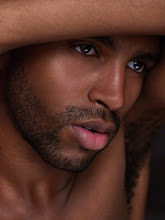JUNE 16- Celebrating YOUTH DAY in South Africa
By Warren Bright


Thirty two years ago, the uprising of a group of schoolchildren changed South Africa forever.
For decades, the whites-only government of South Africa had brutally enforced a policy of racial segregation known as apartheid -- and just as ruthlessly crushed any opposition. By the 1970s, an entire generation of anti-apartheid fighters had been silenced. Many were killed. Others, like Nelson Mandela, were in prison or in exile.

The Soweto uprising or Soweto riots were a series of clashes in Soweto, South Africa on June 16, 1976 between black youths and the South African authorities. The riots grew out of protests against the policies of the National Party government and its apartheid regime.
June 16 is now celebrated in South Africa as Youth Day.
More than 500 people are killed over the next eight months, a quarter of them under age 18. Keystone/Getty Images
Similarly, the Coloured Person's Education Act of 1963 made coloured education the responsibility of the Department of Coloured Affairs and barred coloured children from white schools. In 1965 the Indian Education Act consigned Indian education to the Department of Indian Affairs.
The funding available for bantu education was diverted to building schools in bantustans between 1962 and 1971, and no new schools were constructed in urban areas for non-white students during this time. In 1972 the state committed itself to generating better qualified labourers by improving the education system and between 1972 and 1976 forty new schools were built in Soweto. The learning population in the township multiplied threefold, but still only one in five Soweto children attended schools.


Teachers in Soweto also supported the march after the Action Committee emphasized good discipline and peaceful action.Tsietsi Mashininini led students from Morris Isaacson High School to join up with others who walked from Naledi High School [6]. The students began the march only to find out that police had barricaded the road along their intended route. The leader of the action committee asked the crowd not to provoke the police and the march continued on another route, eventually ending up near Orlando High School.[7]

The crowd of between 3,000 and 10,000 students made their way towards the area of the school. Students sang and wove placards with slogans such as, "Down with Afrikaans", "Viva Azania" and "If we must do Afrikaans, Vorster must do Zulu".[8] A 2006 BBC/SABC documentary corroborated the testimony of Colonel Kleingeld, the police officer who fired the first shot, with eyewitness accounts from both sides. In Kleingeld's account, some of the children started throwing stones as soon as they spotted the police patrol, while others continued to march peacefully. Police attempts to calm the crowd verbally, or to disperse the students using dogs and tear gas had no effect. One of the police dogs was caught, set alight and beaten to death. When police saw they were surrounded by the students, they fired shots into the crowd, and pandemonium broke out.[4]

Colonel Kleingeld drew his handgun and fired a shot, causing panic and chaos. Students started screaming and running and more gunshots were fired. The first person to be shot was Hastings Ndlovu, followed by 12-year-old Hector Pieterson. The photograph taken of his body became a symbol of police brutality. The rioting continued and 23 people, including two white people, died on the first day in Soweto. Among them was Dr Melville Edelstein who had devoted his life to social welfare among blacks.[9] He was stoned to death by the mob and left with a sign around his neck proclaiming 'Beware Afrikaaners'.

Emergency clinics were swamped with injured and bloody children. It is not known how many injured children sustained bullet wounds because doctors refused to collect such details for fear that police would target the families of such children. In many cases bullet wounds were indicated on hospital records as abscesses.[4]


The 1,500 heavily armed police officers deployed to Soweto on June 17 carried weapons including automatic rifles, stun guns, and carbines.[4] They drove around in armoured vehicles with helicopters monitoring the area from the sky. The South African Army was also order on standby as a tactical measure to show military force. Crowd control methods used by South African police at the time included mainly dispersement techniques, and many of the officers shot indiscriminately, killing many people.

The accounts of how many people died vary from 200 to 600[10], with Reuters news agency currently reporting there were "more than 500" fatalities in the 1976 riots. The original government figure claimed only 23 students were killed. The number of wounded was estimated to be over a thousand men, children, and women.






